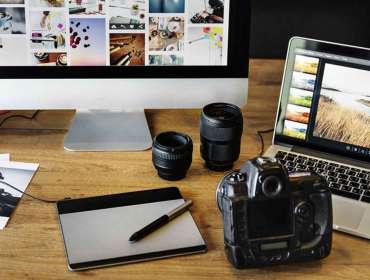One of the biggest challenges I face as a professional photographer is deciding what gear to take along for a foreign trip. I want to have a wide range of equipment but I’m limited by what I can fit into a carry-on bag for the flight. Each trip is a little different depending on the subjects I’m likely to encounter and the kinds of shots I anticipate taking.
For my current trip to Scotland, Ireland, and France, I knew I’d be photographing lots of gardens and landscapes; street scenes in some cities and quite a few towns and villages; and a host of people who cross my path during my travels.

Here’s what I took along to get the job done:
Camera bodies: As I generally do, I took camera bodies that I already owned and that I was thoroughly familiar with. It’s never a good idea to travel with brand new equipment that you haven’t tested and gotten used to using in advance. Also, these cameras are relatively light and easy to carry.
- A Fujifilm XT2 camera body, the best of this line. It has a bright viewfinder, great auto-focus mechanism, and accepts two SD cards at the same time so I can shoot RAW and JPEG at the same time.
- A Fujifilm T20 as a back-up camera. This is the model I had before buying the newer XT2. It doesn’t have all the features of the newer XT2 but would serve me well in a pinch.
Lenses: As with my camera bodies, I took the Fujinon lenses that I already owned and knew well. Fuji doesn’t make a single lens that spans the range of the lenses I took. But even if they did, I prefer having separate lenses so if something goes wrong with one, I can still work with the other two. I work on the assumption that Murphy’s Law will strike at some point, especially when I’m traveling,
- A 16-55mm 2.8 lens, excellent for low light photography. I opted to take this instead of the lighter kit lens, which is roughly the same, because it’s considerably faster and I wanted that extra speed.
- A 50-250mm 5.6 lens, which is fairly light telephoto lens, quite sharp and performs very well for subjects at a distance and portraits, by coming in fairly close and throwing the background out of focus.
- A 10-24 mm, a very wide angle lens which I plan to use especially for gardens and sometimes for landscapes.
Filters: These small, light devices enable me to alter or refine the image in the camera in ways that can’t easily be duplicated using after-capture techniques.
- An ultra-violet (UV) filter, primarily designed to protect the lens, but also minimizes ultra-violet light, which makes images crisper. I have a separate UV filter on each lens.
- A polarizing filter to eliminate glare on foliage and deepen the blue of the sky. I took one only because I wanted to keep my gear as light as possible. I opted for one only for my 16-55mm lens because that’s the lens I use most for photographing gardens.
- Neutral density filters, dark screw-on filters which allow me to slow the shutter speed when shooting running water that I want to portray as a blur. I took a very dark 5-stop and a lighter 2-stop neutral density filter. The darker filter lets me slow the shutter much more than the lighter one. If I want, I can combine both to get the equivalent of a 7-stop neutral density filter.
- A square graduated neutral density filter, which is half dark and half clear. This filter lets me darken the sky but not the land below. The filter is hand held in front of the lens so the line separating the two parts of the filter can be aligned with the horizon. It’s most useful when there’s a differential of three or more stops between the sky and land, as at sunrise or sunset. Mine has a 3-stop differential.
Miscellaneous. Beyond the basics, I also take a variety of other gear that comes in handy at various times:
- Sunshades for each lens.
- A telescoping tripod and plates to attach it to the camera.
- A small on-camera flash.
- A cleaning kit consisting of a soft brush, Q-tips, lens tissue and rubber blower.
- A small flash light, Allen wrench and small Swiss Army knife.
- Extra batteries and a charger.
- A Scripto pen, highlighter, and pen.
- An extra pair of eye glasses.
All these items, except the tripod, fit into a standard camera bag that I can take with me on the airplane; the tripod went into a larger bag that was checked. All ready to head off, all I need now is the skills I take with me everywhere, and a discerning eye.






